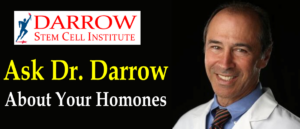Pregnenolone Research
April 12, 2011 by Dr. Marc Darrow, M.D.
Filed under Pregnenolone
Sleep and Memory
George O, Vallee M, Le Moal M, Mayo W. Neurosteroids and cholinergic systems: implications for sleep and cognitive processes and potential role of age-related changes Neurosteroids and cholinergic systems: implications for sleep and cognitive processes and potential role of age-related changes. Psychopharmacology (Berl). 2006 Jan 17;:1-12
Rationale: The neurosteroids pregnenolone sulfate (PREGS), dehydroepiandrosterone sulfate (DHEAS) and allopregnanolone (3alpha,5alpha THPROG) have been implicated as powerful modulators of memory processes and sleep states in young and aged subjects with memory impairment. As these processes depend on the integrity of cholinergic systems, a specific effect of neurosteroids on these systems may account for their effects on sleep and memory.
Objective: To review the evidence for a specific and differential effect of neurosteroids on cholinergic systems.
Conclusions: The specific modulation of basal forebrain and brainstem cholinergic systems by neurosteroids may account for the effects of these compounds on sleep and memory processes. To improve our understanding of the role of neurosteroids in cholinergic systems during normal and pathological aging, we need to determine whether there is specific regionalization of neurosteroids, and we need to investigate the relationship between neurosteroid concentrations in cholinergic nuclei and age-related sleep and memory impairments.
Alzheimer’s
Neurosteroid quantification in human brain regions: comparison between Alzheimer’s and nondemented patients.
Weill-Engerer S, David JP, Sazdovitch V, Liere P, Eychenne B, Pianos A, Schumacher M, Delacourte A, Baulieu EE, Akwa Y.Neurosteroid quantification in human brain regions: comparison between Alzheimer’s and nondemented patients.J Clin Endocrinol Metab. 2002 Nov;87(11):5138-43
Abstract: “…To investigate the physiopathological significance of neurosteroids in Alzheimer’s disease (AD), we compared the concentrations of pregnenolone, pregnenolone sulfate (PREGS), dehydroepiandrosterone, dehydroepiandrosterone sulfate (DHEAS), progesterone, and allopregnanolone…in individual brain regions of AD patients and aged nondemented controls, including hippocampus, amygdala, frontal cortex, striatum, hypothalamus, and cerebellum.
A general trend toward decreased levels of all steroids was observed in all AD patients’ brain regions compared with controls: PREGS and DHEAS were significantly lower in the striatum and cerebellum, and DHEAS was also significantly reduced in the hypothalamus. A significant negative correlation was found between the levels of cortical beta-amyloid peptides and those of PREGS in the striatum and cerebellum and between the levels of phosphorylated tau proteins and DHEAS in the hypothalamus. This study provides reference values for steroid concentrations determined by gas chromatography-mass spectrometry in various regions of the aged human brain. High levels of key proteins implicated in the formation of plaques and neurofibrillary tangles were correlated with decreased brain levels of PREGS and DHEAS, suggesting a possible neuroprotective role of these neurosteroids in AD.”

